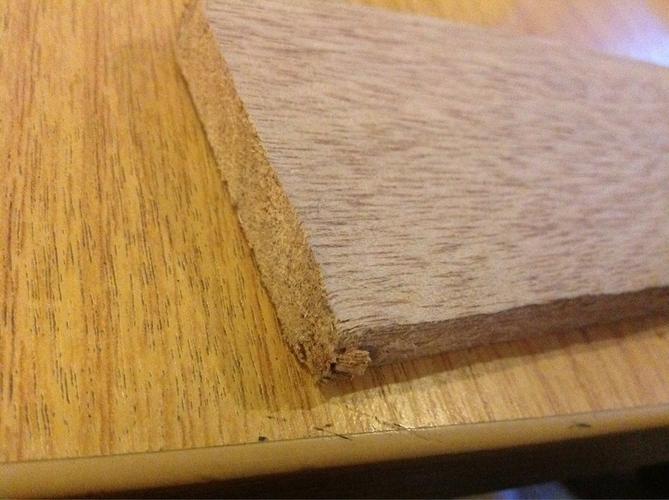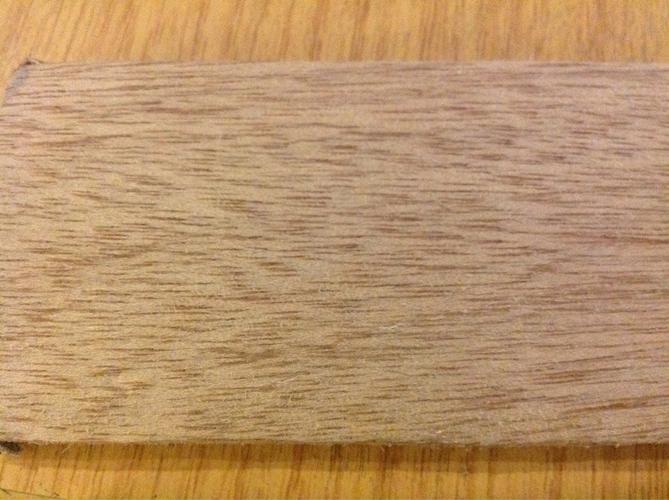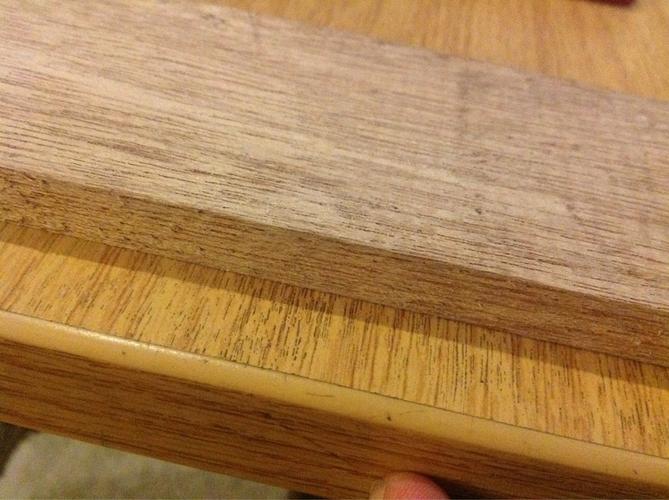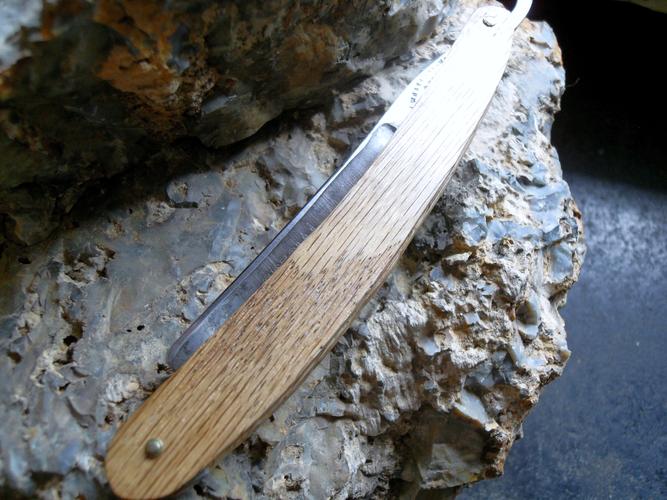Results 1 to 10 of 16
Thread: Need help - identifying wood :)
-
05-28-2012, 08:16 PM #1
 Need help - identifying wood :)
Need help - identifying wood :)
Ok your welcome to get out any jokes about identifying wood now
 and apologies if I'm in the wrong section of the forum but I couldn't see a better place to post.
and apologies if I'm in the wrong section of the forum but I couldn't see a better place to post.
But I need a little bit of help identify a plank of wood that I recently acquired, I know there are certain types of wood that shouldn't be used for scales so I'm hoping this isn't one of them.
Apologies for the pics but it's the best I can do with the lighting available right now.



Its just about perfect in thickness to be ripped into two thin lengths each two foot long, it has the ability to become a lot of razor scales lol, plus. It was free so if I stuff up making scales then I've lost nothing but some time.
Any help would be appreciated.
-
05-28-2012, 08:19 PM #2At this point in time...




- Join Date
- Jun 2007
- Location
- North Idaho Redoubt
- Posts
- 27,206
- Blog Entries
- 1
Thanked: 13250
Oh Boy you are sure limiting all of our senses to just ONE hehehe
Using just that one, my first impression is Cedar but that is a huge WAG
-
05-28-2012, 08:36 PM #3

Looks cedar-like to me as well,though I've also seen some cuts of red oak with similar grain.
-
05-28-2012, 08:53 PM #4

Thanks guys I've been looking online for some pics and it seems to match the suggestion of it being cedar, which is not on the toxic wood list so I think I might have ago at ripping it down for some scales.
On another note I noticed oak is on the toxic wood list is that to say it shouldn't be used for scales as a guide or does it mean that special precautions should be taken when sanding etc ??
As I was once sent a set of oak blanks from a member on here to have ago at making scales with, but am a little concerned that this might not be a good idea now.?
-
05-28-2012, 09:00 PM #5

Just because a wood is considered "toxic" doesn't mean it is poisonous. As long as you wear a resperator/dust mask and safety glasses, you should be able to work with just about any wood. The "toxicity" occurs while it is being worked for most woods.
-
05-28-2012, 09:05 PM #6Senior Member


- Join Date
- Jan 2011
- Location
- Roseville,Kali
- Posts
- 10,432
Thanked: 2027
Gotta think philippine mahogany,whatever it is looks far to pithy for scales.
-
05-28-2012, 09:06 PM #7At this point in time...




- Join Date
- Jun 2007
- Location
- North Idaho Redoubt
- Posts
- 27,206
- Blog Entries
- 1
Thanked: 13250
If it is Cedar (or any other soft wood) it needs to be hardened to use as scales, Cedar is a very soft wood, I would at the very least give the scales a good soaking in a sealer/hardener, then after it dries re-sand and apply a good hard coat finish.
JMHO
g
-
05-28-2012, 09:17 PM #8

Well it's good to know that the list is more for the prep work of the wood than actually using the wood as scales . If anything the plank will be a good start for me to get to grips with making scales as throughout my history my ability to work with wood has been poor at best
 the last thing I want todo is ruin some perfectly good oak that has a history to it and is fairly old.
the last thing I want todo is ruin some perfectly good oak that has a history to it and is fairly old.
-
05-28-2012, 09:27 PM #9

Just for reference, here's a set of scales in red oak with similar, though not exact grain.

-
05-28-2012, 09:29 PM #10

When you say it might be a softwood am I to think it would be like pine, in that it's easily marked with your fingernail, sharp blade etc ?? As I've tried running my fingernail over the length, and end grain with no noticeable marks left on it, there's also very little flex in the wood, I think the easiest thing for me todo might be to cut it up and see how reacts when I work it?


 7Likes
7Likes LinkBack URL
LinkBack URL About LinkBacks
About LinkBacks







 Reply With Quote
Reply With Quote
